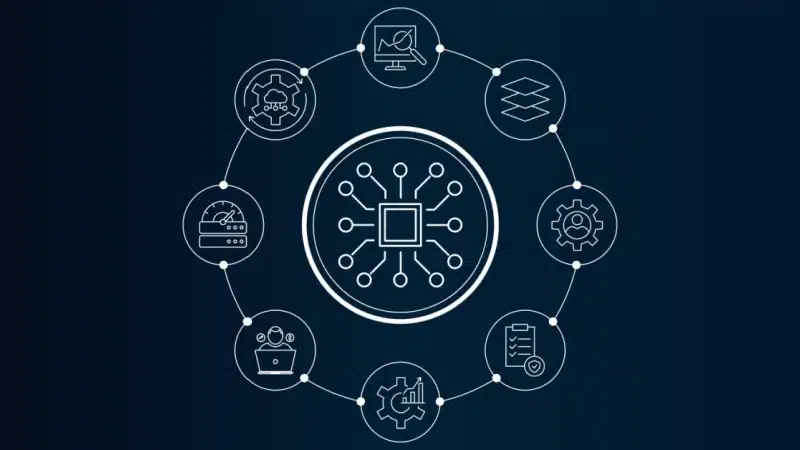Top Cybersecurity Frameworks and When to Use Them
28 July
In today’s digital-first world, cybersecurity is no longer optional—it’s essential. With cyber threats growing in sophistication and frequency, businesses must adopt robust measures to protect their data, systems, and reputation. One of the most effective ways to build a strong defence is by aligning your organisation’s security strategy with a recognised cybersecurity framework.
But with several frameworks available, choosing the right one can be overwhelming. Below, we explore the top cybersecurity frameworks and provide guidance on when and why to use each.
1. NIST Cybersecurity Framework (CSF)
Developed by: National Institute of Standards and Technology (U.S.)
Best for: Organisations of all sizes seeking a comprehensive, flexible approach to managing cybersecurity risk.
Overview:
The NIST CSF is one of the most widely adopted frameworks globally. It provides a structured methodology for identifying, protecting against, detecting, responding to, and recovering from cyber threats.
When to Use:
-
Ideal for both public and private sector organisations.
-
Particularly useful for companies doing business in or with the United States.
-
Great starting point for organisations developing a cybersecurity strategy from scratch.
Pros:
-
Highly customisable.
-
Supports continuous improvement.
-
Industry-agnostic.
2. ISO/IEC 27001
Developed by: International Organization for Standardization and International Electrotechnical Commission
Best for: Organisations aiming for global recognition and certification of their information security practices.
Overview:
ISO/IEC 27001 is a formalised standard for establishing, implementing, maintaining, and continually improving an information security management system (ISMS). It’s internationally recognised and often required in contracts and tenders.
When to Use:
-
When certification is necessary to meet client or regulatory requirements.
-
Ideal for multinational organisations.
-
Suitable when you want a process-driven, risk-based approach to managing security.
Pros:
-
Globally recognised.
-
Can be audited and certified.
-
Encourages a culture of continual improvement.
3. CIS Controls
Developed by: Center for Internet Security (CIS)
Best for: Small to mid-sized organisations looking for practical, actionable steps to improve security.
Overview:
CIS Controls are a prioritised set of best practices designed to help organisations defend against the most common cyber threats. The latest version includes 18 controls ranging from inventory management to incident response.
When to Use:
-
When you need quick wins and a pragmatic, step-by-step guide.
-
Particularly effective for organisations with limited resources or expertise.
Pros:
-
Simple to understand and implement.
-
Regularly updated to reflect emerging threats.
-
Helps prioritise actions based on risk.
4. COBIT (Control Objectives for Information and Related Technologies)
Developed by: ISACA
Best for: Large enterprises focused on governance, compliance, and aligning IT with business goals.
Overview:
COBIT is a framework for the governance and management of enterprise IT. It provides a high-level approach to control and policy management with a focus on regulatory compliance and aligning IT with strategic business objectives.
When to Use:
-
Best for organisations with mature IT processes.
-
Particularly relevant in finance, government, and regulated industries.
Pros:
-
Emphasises IT governance.
-
Integrates well with other frameworks like ITIL and ISO standards.
-
Helps bridge the gap between technical and business stakeholders.
5. Cyber Essentials
Developed by: UK Government / National Cyber Security Centre (NCSC)
Best for: UK-based SMEs and organisations seeking a basic but effective cybersecurity baseline.
Overview:
Cyber Essentials is a government-backed certification scheme aimed at helping organisations protect against common online threats. It focuses on five key technical controls: firewalls, secure configuration, access control, malware protection, and patch management.
When to Use:
-
Required for many UK government contracts.
-
Suitable for small businesses or as a first step in a larger security strategy.
Pros:
-
Affordable and accessible.
-
Builds trust with clients and partners.
-
Straightforward certification process.
Choosing the Right Framework
The best framework depends on your organisation’s size, industry, regulatory environment, and security maturity. Here’s a quick guide:
| Framework | Best For | Certification Available? |
|---|---|---|
| NIST CSF | Broad applicability, including critical sectors | No |
| ISO/IEC 27001 | International credibility and certification | Yes |
| CIS Controls | Quick wins and practical implementation | No (but mapping available) |
| COBIT | Enterprise-level IT governance and compliance | Yes (via ISACA) |
| Cyber Essentials | UK SMEs and basic protection | Yes |
Final Thoughts
No single framework is a silver bullet, but each offers a roadmap to stronger cybersecurity. By assessing your organisation’s goals and regulatory needs, you can select a framework—or a combination of them—that strengthens your defences and demonstrates your commitment to cybersecurity.
Need help getting started? Consulting with cybersecurity professionals or auditors experienced in these frameworks can accelerate your path to compliance and resilience.
